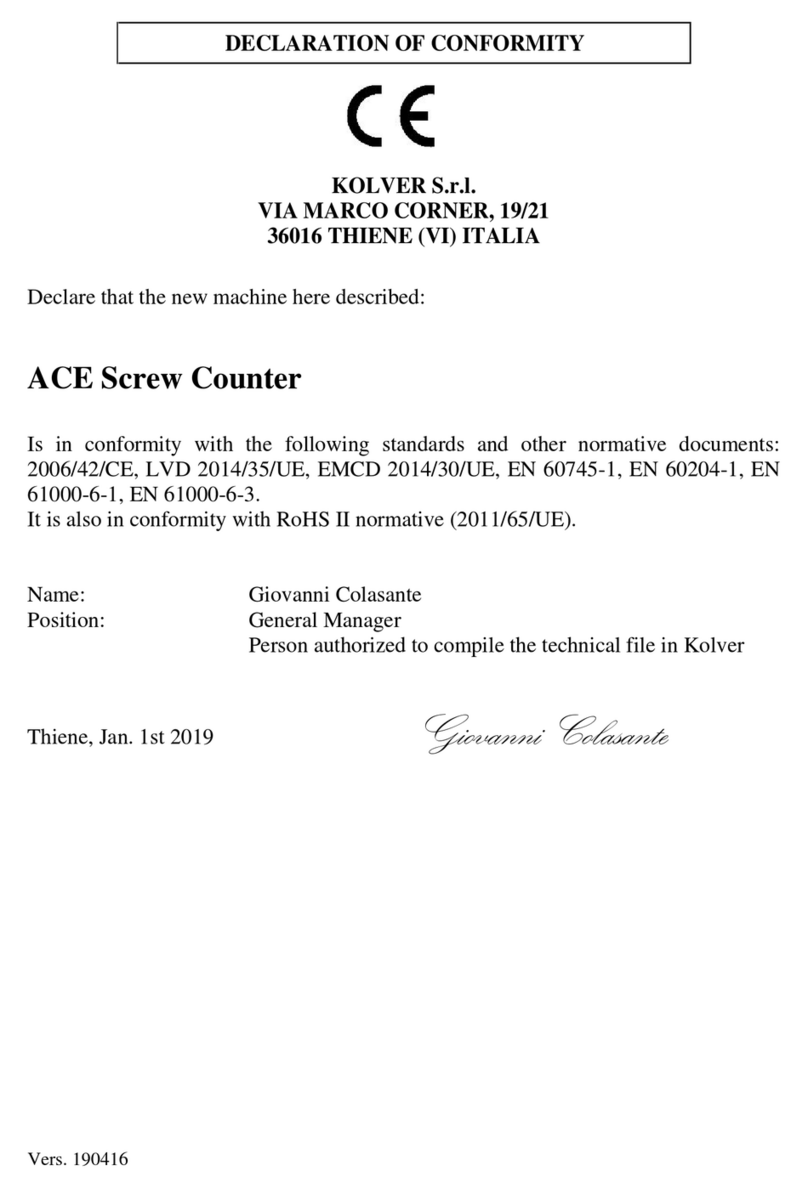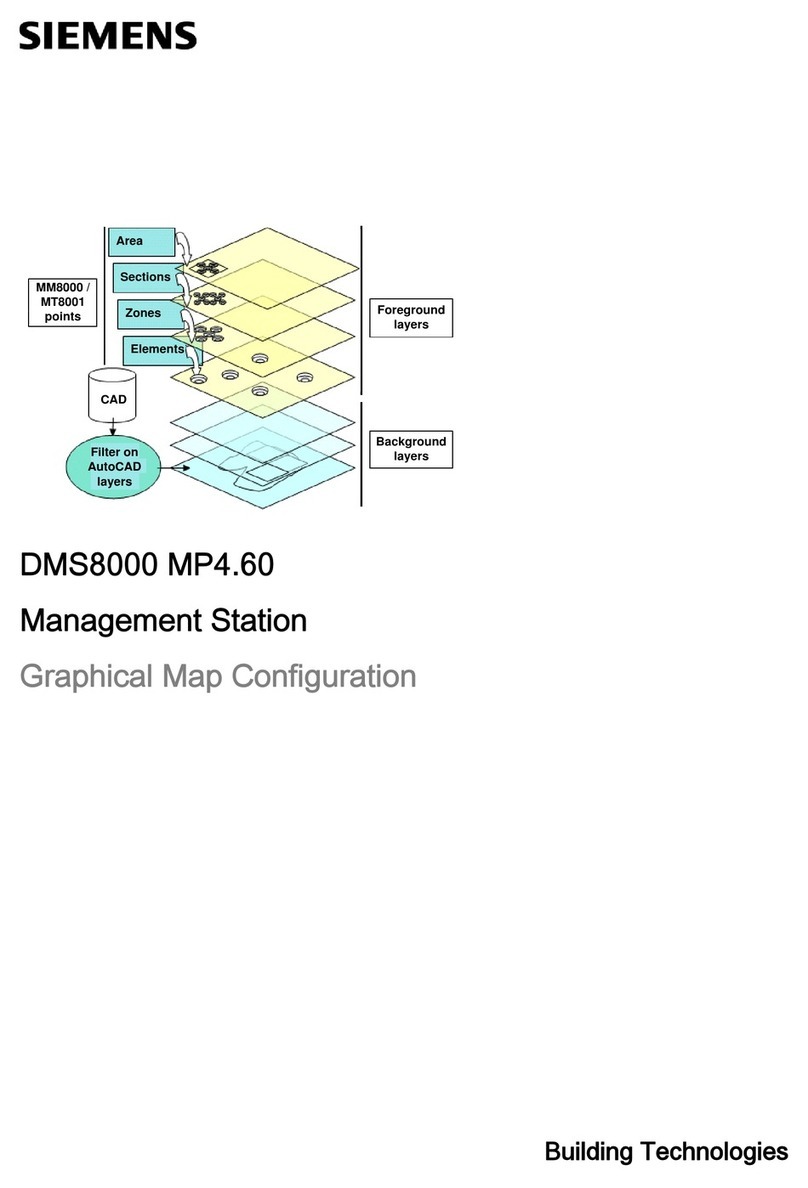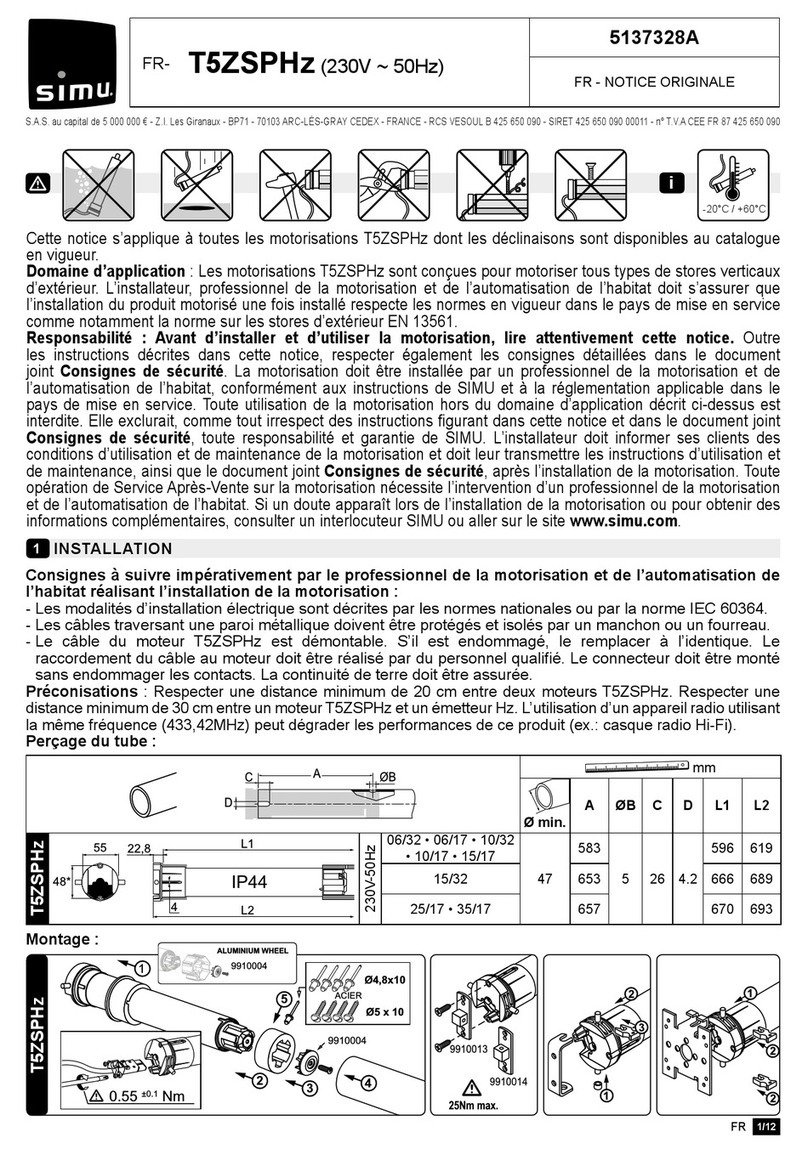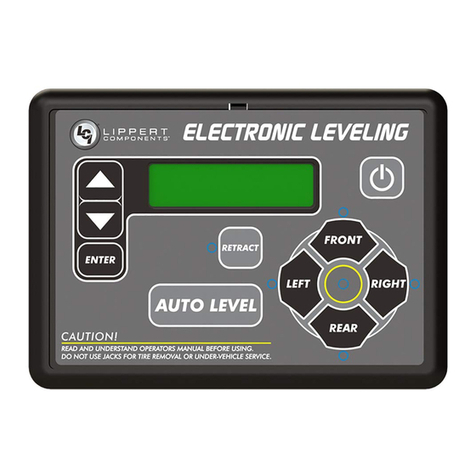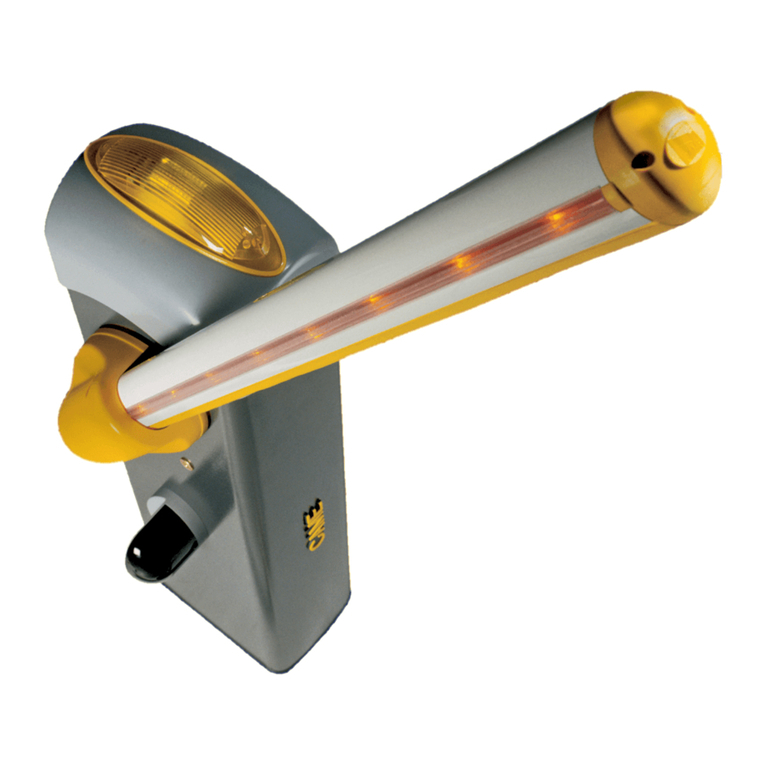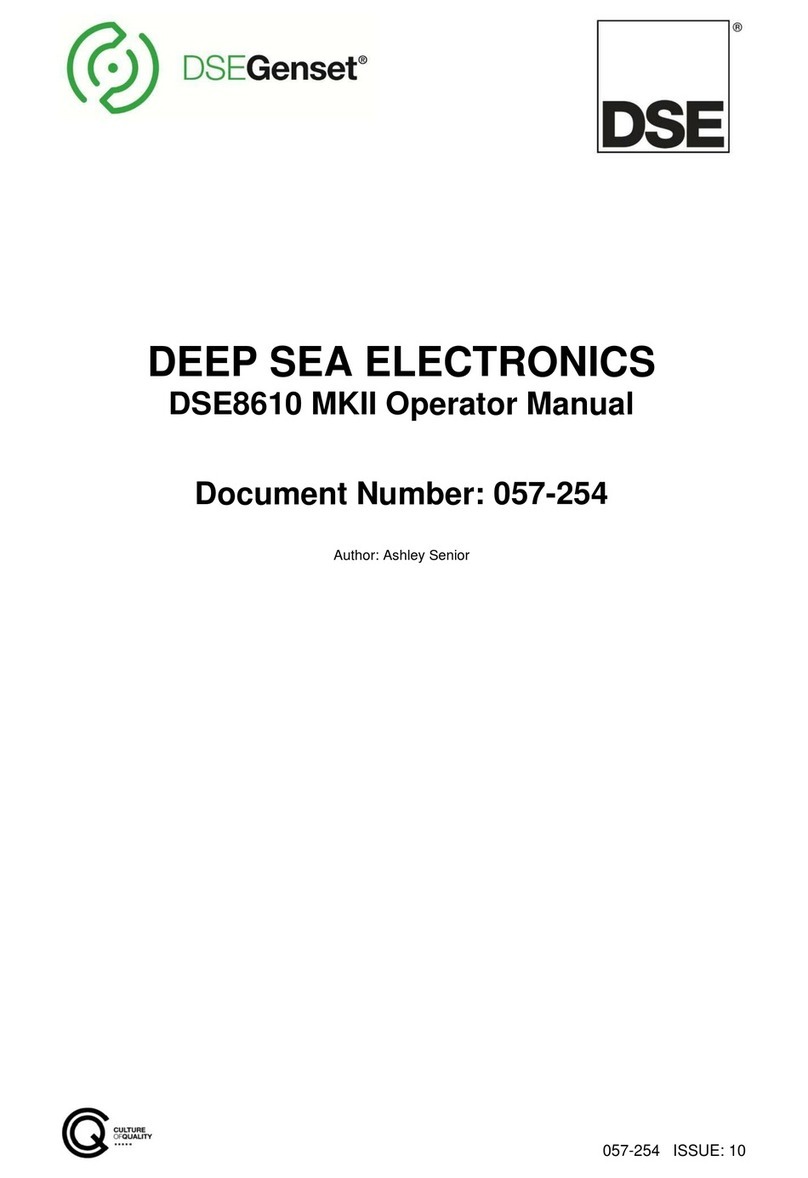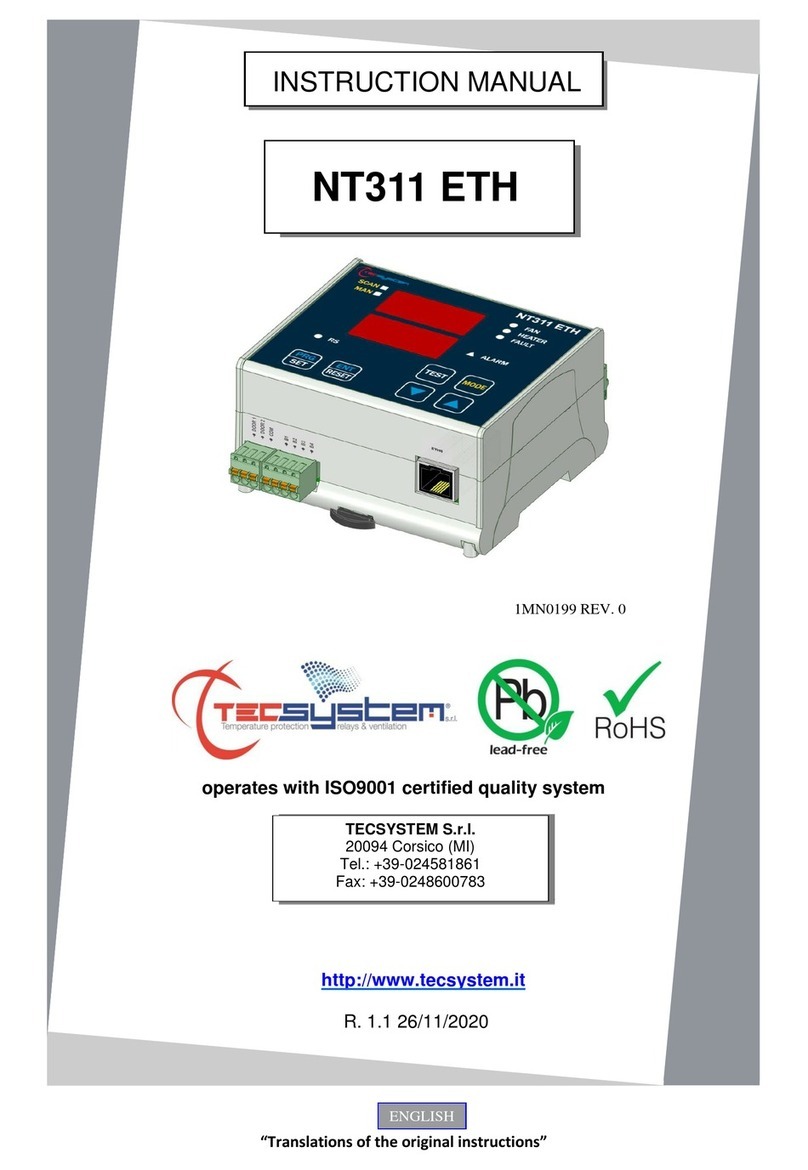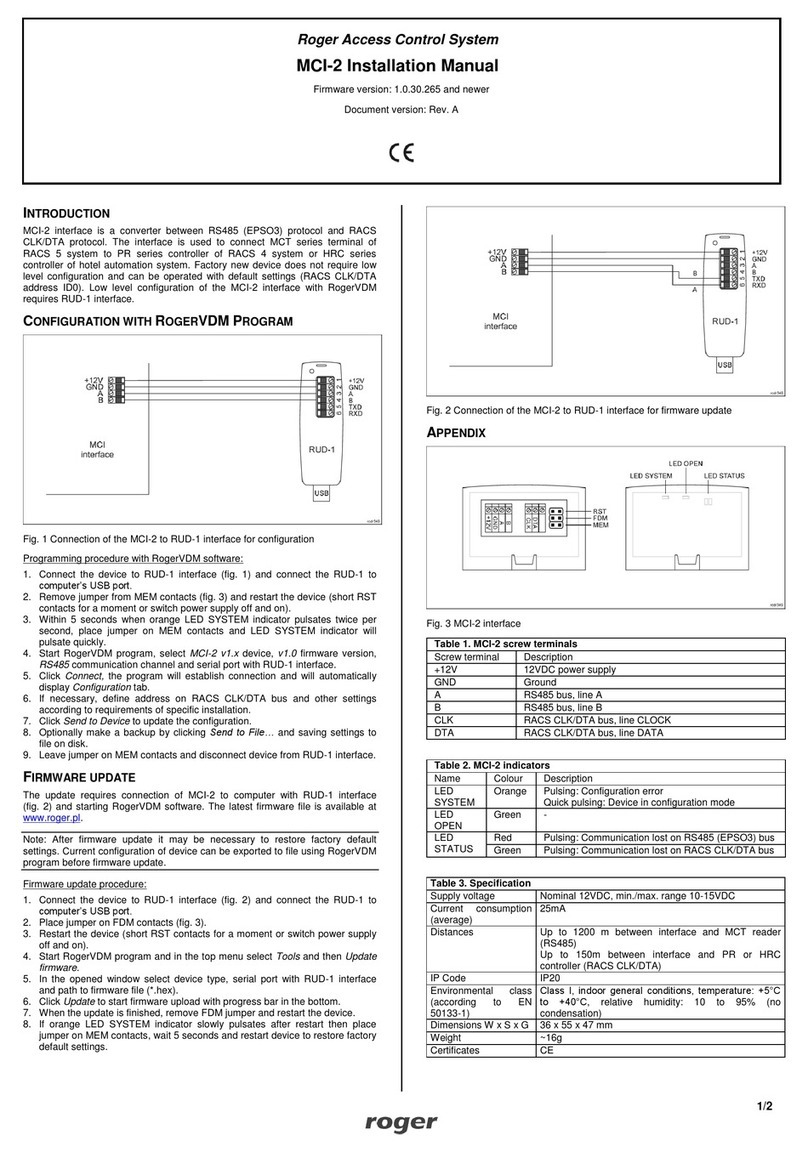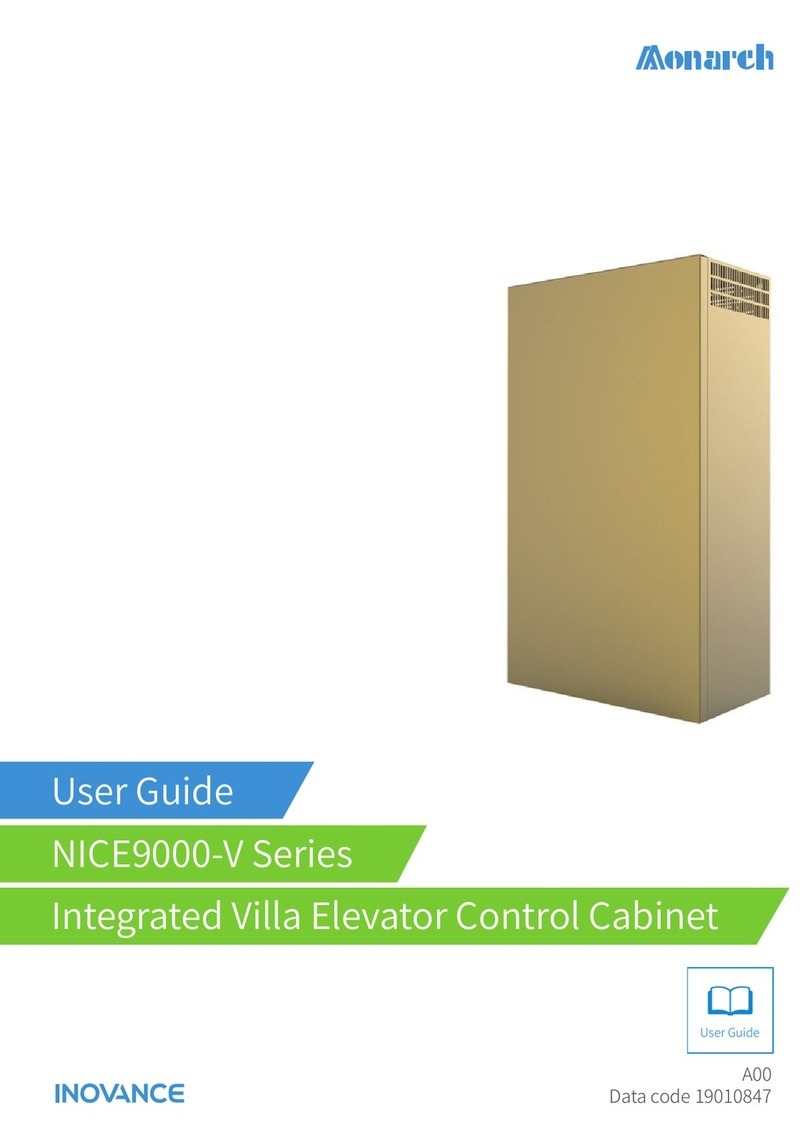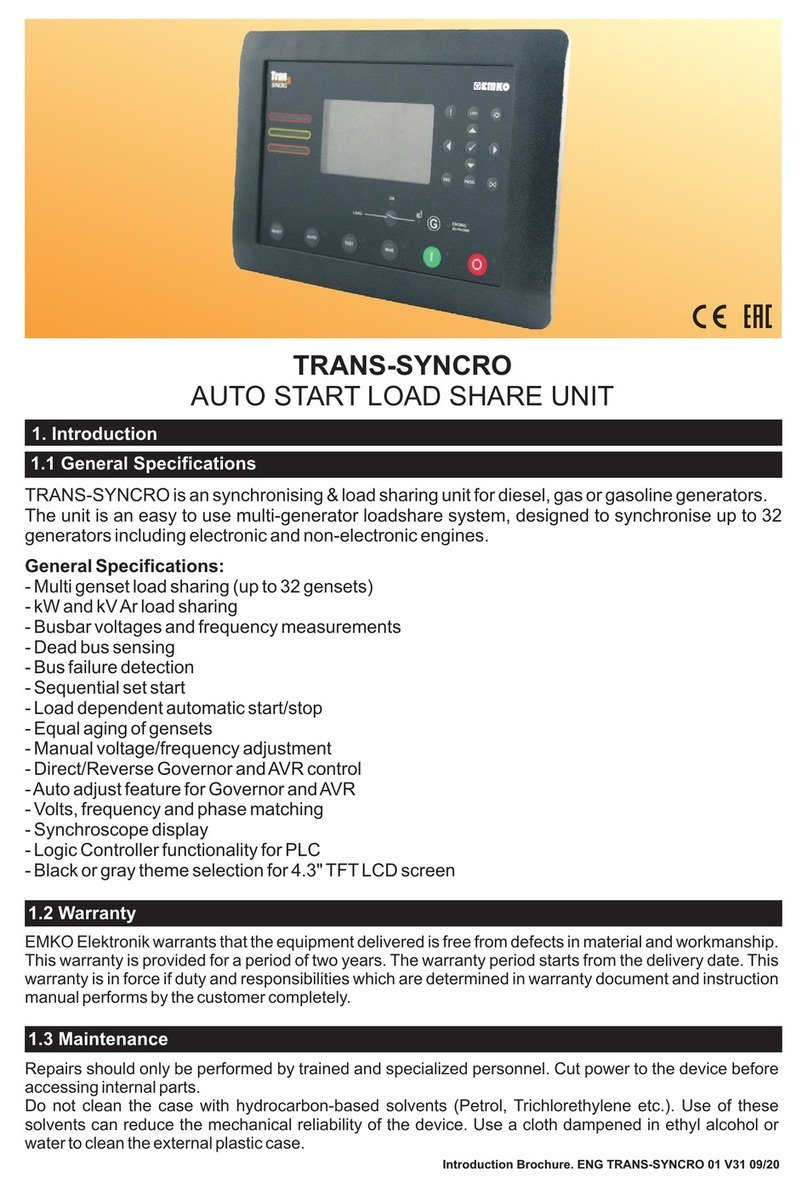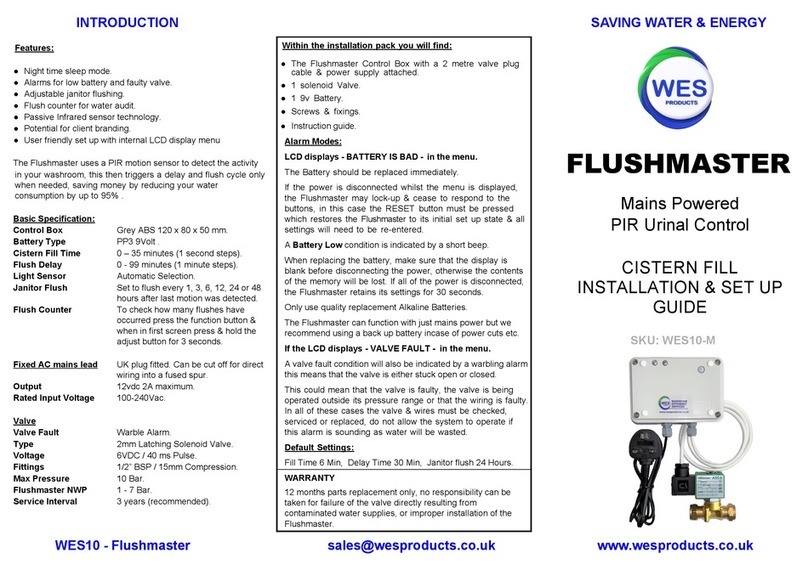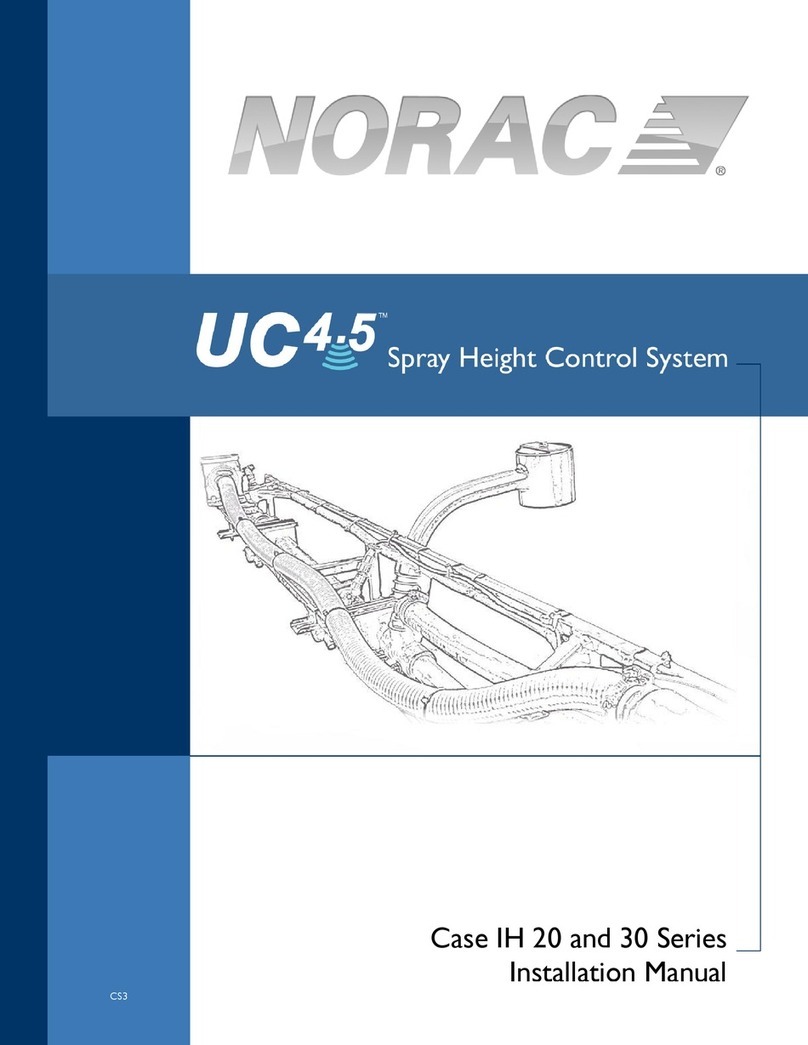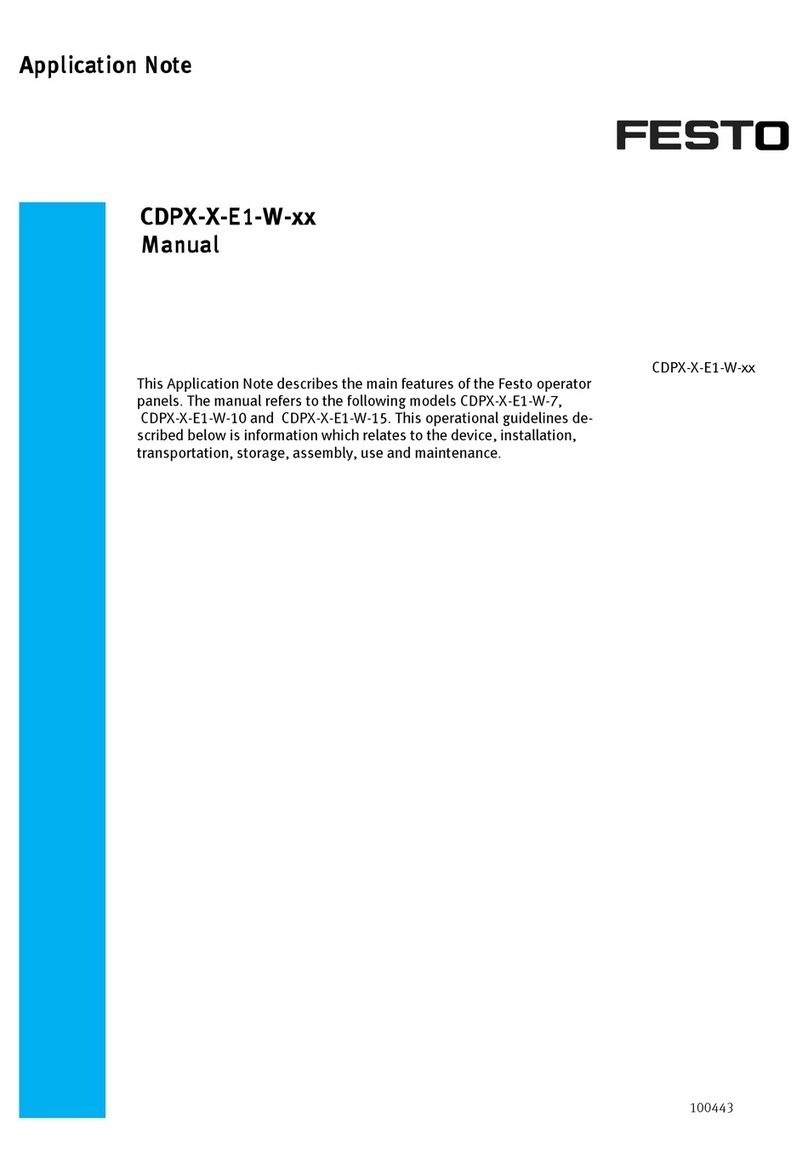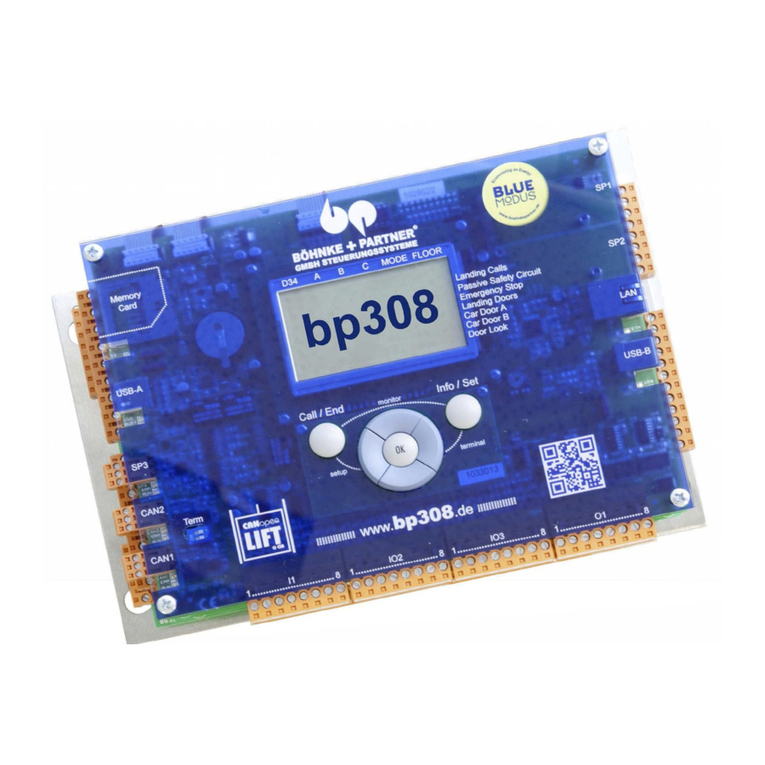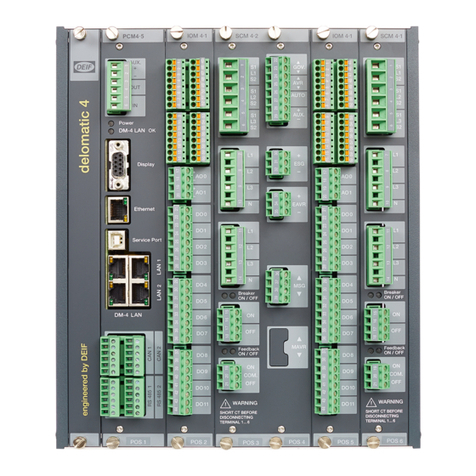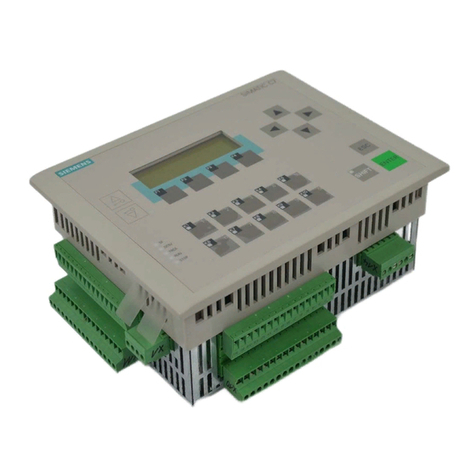Electronics Diversified EnAct User manual

1
EnAct
Revision 7 September 1998
© 1998, Electronics Diversified, Inc.
070-0620
EnAct
User Manual

2
EnAct
To assist you through these steps, this Manual offers:
BOLD TITLES: In the upper left and right corner to tell
KEY LINES: Subheads which describe indexed
categories.
SCREENS: Describedetailsforeasyidentification.
KEY STROKES: Actual key presses required to
complete the instruction.
COMMENTS:
Comments about operation in italics.
EXAMPLES: Common instructions used in normal
operation.
SUPPORT: 24-hour Service/Support network.
INTRODUCTION
HOW TO USE THIS MANUAL
Sometimes the best results occur when you get a look at the
subjectmatter from an entirelynew direction. This fresh startidea
should start at basic requirements and how to relate information in
a modern age. Many would agree that good lighting controls
shouldbedesignedtoadapt toanoverall performanceenvironment,
not just playback in one. Lighting controls need to adapt to a
changing environment. This is the challenge of the 90s.
The EnAct family of control is designed to offer advanced
features with a new presentation format for a fresh start approach
to control. Control details are now presented in a high definition
SVGA video format. A single video screen can present up to 200
control channels in an easy to read format.
In addition, the screen also provides a detailed active cue window
to inform the operator of the next and last actions. Couple this with
active color coding for channel fields, and an alphanumeric label
capacity for cues, groups, submasters, and effects, and now you
have a dynamic video display that presents concise information in
a clear, readable form to support operator controls.
The EnAct family of control targets flexibility in how the console
operates by user-selectable conditions. The Set-Up Menu offers
the user real choices on how the console will respond. These
conditions allow features like Auto Record, Editing on Track and
Cue Screens, Advancing Submasters, Preset or Track Mode
operations, and Remote Record features. These features can also
be controlled by Macros. The user can switch these features by
Macro or Set-Up Screen, based on preference.
EnAct Consoles offer significant additions in the submaster
playback area of control. With up to eight pages of 24 playbacks,
the EnAct allows the operator to set unique sequences of actions
on the playbacks and operate them in a timed or manual mode.
Timed playbacks can be labeled as advancing so that the
completion of one automatically starts the next. Color-coded
Bump Controls also start and stop actions. The EnAct comes with
a Playback Display, designed to identify and coordinate these
features. Additional features include SMPTE & MIDI control inter-
faces.
EnAct Consoles offer enhanced performance on a RISC-based
central processing unit. The EnAct is based on work station
technology rather than PC-based controls. This difference is
apparent when large tasks are addressed by the console.
We believe that the EnAct Control family offers real progress in
user controls designed to adapt the changing role of lighting in the
90s.
This User Manual is supplied with your system. Copies of this
guide may be obtained from Electronics Diversified, Inc. for a
nominal charge. It is recommended that you copy those portions
of this manual applicable to your present use in the installation,
maintenance or repair and preserve the original in a safe place.
© 1998, by Electronics Diversified, Inc. All rights reserved.
No part of this manual may be reproduced by any means,
graphic, electronic, or mechanical, including photocopying,
recording, taping, or information storage and retrieval systems,
without the express written permission of Electronics Diversified,
Inc., except in connection with installation, operation, repair and
maintenance of Electronics Diversified, Inc. systems.
the reader which section he is using.

3
EnAct
TABLE OF CONTENTS
OVERVIEW
Front Panel . . . . . . . . . . . . . . . . . . . . . . . . . . . . . . . . . . . . . 4
Keypad Layout . . . . . . . . . . . . . . . . . . . . . . . . . . . . . . . . . . 4
Screen Keys . . . . . . . . . . . . . . . . . . . . . . . . . . . . . . . . . . . . 5
Action Keys . . . . . . . . . . . . . . . . . . . . . . . . . . . . . . . . . . . . . 6
Command Keys . . . . . . . . . . . . . . . . . . . . . . . . . . . . . . . . . . 7
Number Keys . . . . . . . . . . . . . . . . . . . . . . . . . . . . . . . . . . . . 8
Selection Keys . . . . . . . . . . . . . . . . . . . . . . . . . . . . . . . . . . . 8
Fader Keys . . . . . . . . . . . . . . . . . . . . . . . . . . . . . . . . . . . . . 9
Macro Keys . . . . . . . . . . . . . . . . . . . . . . . . . . . . . . . . . . . . . 9
Rear Panel . . . . . . . . . . . . . . . . . . . . . . . . . . . . . . . . . . . . . . 10
Side Panel . . . . . . . . . . . . . . . . . . . . . . . . . . . . . . . . . . . . . . 11
Format a Disk . . . . . . . . . . . . . . . . . . . . . . . . . . . . . . . . . . . 11
SYSTEM SETUP
Start Up . . . . . . . . . . . . . . . . . . . . . . . . . . . . . . . . . . . . . . . . 12
Display Screen . . . . . . . . . . . . . . . . . . . . . . . . . . . . . . . . . . 13
STAGE SCREEN
Setting Levels . . . . . . . . . . . . . . . . . . . . . . . . . . . . . . . . . . . 17
Merge, Insert . . . . . . . . . . . . . . . . . . . . . . . . . . . . . . . . . . . 20
Recording Cues . . . . . . . . . . . . . . . . . . . . . . . . . . . . . . . . 21
Modifying Cues . . . . . . . . . . . . . . . . . . . . . . . . . . . . . . . . . 23
Recording Groups . . . . . . . . . . . . . . . . . . . . . . . . . . . . . . 23
Recording Submasters . . . . . . . . . . . . . . . . . . . . . . . . . . . 24
Load & Run Cues . . . . . . . . . . . . . . . . . . . . . . . . . . . . . . . 25
Interrupt Cues . . . . . . . . . . . . . . . . . . . . . . . . . . . . . . . . . . 25
Tracking . . . . . . . . . . . . . . . . . . . . . . . . . . . . . . . . . . . . . . . 26
Cue Window . . . . . . . . . . . . . . . . . . . . . . . . . . . . . . . . . . . 26
PREVIEW SCREEN
Setting Levels . . . . . . . . . . . . . . . . . . . . . . . . . . . . . . . . . . 27
Change Cue Window Information . . . . . . . . . . . . . . . . . . . 27
Copy Cue Levels . . . . . . . . . . . . . . . . . . . . . . . . . . . . . . . 27
SUBMASTER SCREEN
Setting Levels . . . . . . . . . . . . . . . . . . . . . . . . . . . . . . . . . . 28
Change Sub Window Information . . . . . . . . . . . . . . . . . . . 28
Copy Submaster Levels . . . . . . . . . . . . . . . . . . . . . . . . . . 28
GROUP SCREEN
Setting Levels . . . . . . . . . . . . . . . . . . . . . . . . . . . . . . . . . . 29
Change Group Window Information . . . . . . . . . . . . . . . . . 29
Copy Group Levels . . . . . . . . . . . . . . . . . . . . . . . . . . . . . . 29
PLAYBACK SCREEN
Running Playbacks . . . . . . . . . . . . . . . . . . . . . . . . . . . . . . 30
Running Playbacks Manually . . . . . . . . . . . . . . . . . . . . . . . 31
TRACK SCREEN
Setting Levels . . . . . . . . . . . . . . . . . . . . . . . . . . . . . . . . . . 32
CUE LIST SCREEN
Editing the Cue List Screen . . . . . . . . . . . . . . . . . . . . . . . . 33
PATCH SCREEN
Patch by Dimmer . . . . . . . . . . . . . . . . . . . . . . . . . . . . . . . . 34
Parked Dimmers . . . . . . . . . . . . . . . . . . . . . . . . . . . . . . . . . 34
Position Controls . . . . . . . . . . . . . . . . . . . . . . . . . . . . . . . . . 34
Unpatch . . . . . . . . . . . . . . . . . . . . . . . . . . . . . . . . . . . . . . . 35
Unity Patch . . . . . . . . . . . . . . . . . . . . . . . . . . . . . . . . . . . . 35
Patch by Channel . . . . . . . . . . . . . . . . . . . . . . . . . . . . . . . 35
Position Controls . . . . . . . . . . . . . . . . . . . . . . . . . . . . . . . . 35
EFFECT SCREEN
Activating Steps by Groups. . . . . . . . . . . . . . . . . . . . . . . . . 36
EFFECT TRACK SCREEN
Setting Levels . . . . . . . . . . . . . . . . . . . . . . . . . . . . . . . . . . 37
Example Effect . . . . . . . . . . . . . . . . . . . . . . . . . . . . . . . . . 37
SETUP SCREENS
Main Menu . . . . . . . . . . . . . . . . . . . . . . . . . . . . . . . . . . . . . 38
System Menu . . . . . . . . . . . . . . . . . . . . . . . . . . . . . . . . . . . 39
Cues Menu . . . . . . . . . . . . . . . . . . . . . . . . . . . . . . . . . . . . 39
Submaster Menu . . . . . . . . . . . . . . . . . . . . . . . . . . . . . . . . 40
Patch Menu . . . . . . . . . . . . . . . . . . . . . . . . . . . . . . . . . . . . 40
Front Panel Menu . . . . . . . . . . . . . . . . . . . . . . . . . . . . . . . 40
Save to Disk Menu . . . . . . . . . . . . . . . . . . . . . . . . . . . . . . 41
Load from Disk Menu . . . . . . . . . . . . . . . . . . . . . . . . . . . . 41
Print Functions Menu . . . . . . . . . . . . . . . . . . . . . . . . . . . . . 41
Clear Menu . . . . . . . . . . . . . . . . . . . . . . . . . . . . . . . . . . . . 42
Time Functions Menu . . . . . . . . . . . . . . . . . . . . . . . . . . . . 42
Peripherals/Utilities Menu. . . . . . . . . . . . . . . . . . . . . . . . . . 43
MISCELLANEOUS SCREENS
Help . . . . . . . . . . . . . . . . . . . . . . . . . . . . . . . . . . . . . . . . . . 44
Macro . . . . . . . . . . . . . . . . . . . . . . . . . . . . . . . . . . . . . . . . 44
Profile . . . . . . . . . . . . . . . . . . . . . . . . . . . . . . . . . . . . . . . . 45
Source . . . . . . . . . . . . . . . . . . . . . . . . . . . . . . . . . . . . . . . . 45
ACCESSORIES
Remote Record . . . . . . . . . . . . . . . . . . . . . . . . . . . . . . . . . 46
Remote Video . . . . . . . . . . . . . . . . . . . . . . . . . . . . . . . . . . 46
Hook-up . . . . . . . . . . . . . . . . . . . . . . . . . . . . . . . . . . . . . . 47
Keyboard . . . . . . . . . . . . . . . . . . . . . . . . . . . . . . . . . . . . . . 47
Printers . . . . . . . . . . . . . . . . . . . . . . . . . . . . . . . . . . . . . . . 47
Hand-held Remote . . . . . . . . . . . . . . . . . . . . . . . . . . . . . . 48
Designer's Remote . . . . . . . . . . . . . . . . . . . . . . . . . . . . . . 48
MIDI . . . . . . . . . . . . . . . . . . . . . . . . . . . . . . . . . . . . . . . . . . 49
SMPTE Screen (Timed Actions) . . . . . . . . . . . . . . . . . . . . 49
Common Questions . . . . . . . . . . . . . . . . . . . . . . . . . . . . . . 50
ADDENDUM
EnAct Chassis . . . . . . . . . . . . . . . . . . . . . . . . . . . . . . . . . . 52
EnAct Front Panel . . . . . . . . . . . . . . . . . . . . . . . . . . . . . . . 53
SERVICE
Service/Support . . . . . . . . . . . . . . . . . . . . . . . . . . . . . . . . . 54
Registration . . . . . . . . . . . . . . . . . . . . . . . . . . . . . . . . . . . . 55

4
EnAct
OVERVIEW
FRONT PANEL
1
2
3
4
567
89
1. PLAYBACK HANDLES:
Manual control of Submaster playbacks.
2. PLAYBACK BUMP BUTTONS:
Starts timed Submaster playbacks and bumps manuals to a Full
level.
3. EFFECTS CONTROLS:
Time and Level control for the running effects.
4. FADER TAKEOVER BUTTONS:
Captures active fades to a handle and unloads uncompleted
fades from the Faders.
5. MANUAL FADER CONTROLS:
Adjusts fade level from the point captured to Full.
6. COMMAND KEYPAD:
Moves through screens, enters values, and starts functions.
7. ENCODER WHEEL:
Adjusts selected channel levels, and speeds up / slows down
fades.
8. KEY SWITCHES:
Key access to power, record and backup functions.
9. DISK DRIVE:
Off-line storage of recorded show information.
KEYPAD LAYOUT
Fader Keys
Action Keys
Macro Keys
Action Keys
Command Keys Number Keys Selection Keys
Screen Keys
EnAct
The EnAct is a microprocessor-based control system with
all operational instruction sets and controls routines embedded
in read-only memory. The Control Console front panel allows
access to these instructions and routines through key
selections. All key selections are echoed on the system
Command Line located at the bottom left of your monitor.
The primary access to the control system is through the
keypad controls on the front panel of the console. The keypads
are grouped together under common control headings for
ease of operation. There are seven groups: Screen Keys;
Action Keys; Command Keys; Number Keys; Selection Keys;
Fader Keys and Macro Keys.
The general titles for the grouping of keys indicate their
functions.

5
EnAct
OVERVIEW
STAGE:
Thisscreen shows channels withlevelsfromthe various sources.
Also shown is information of the cue on stage and the two
following.Cues, groups and subscanberecorded or rerecorded
and cue times can be changed on this screen. A second press
will show the Source screen, which shows the source of the
channel levels.
PREVIEW:
This screen shows the contents of cues. A cue's levels and
attributes can be edited blind in this screen. New cues can also
be recorded. A second press will show a list of cues with
numbers and names.
SUBMASTER:
This screen shows the contents of submasters. A submaster's
levels and times can be edited blind in this screen. New
submasters can also be recorded. A second press will show a
list of submasters with numbers and names.
GROUP:
This screen shows the contents of groups. A group's levels can
beeditedblind in this screen. New groupscanalso be recorded.
A second press will show a list of groups with numbers and
names.
PLAYBACK:
This screen shows a listing of submasters and the current page
that is active. Times can be changed and handles can be forced
to new pages. The current level of the handle is also shown.
TRACK:
This screen shows the cues in a spreadsheet format. Cue levels
can be edited blind in this screen.
CUE LIST:
This screen shows the list of the cue times and attributes, which
can be edited.
A second press displays the Timed Actions screen. This screen
shows actions that can be started by SMPTE, a timer, or by the
clock.
PATCH:
This screen shows a patch by dimmers. Channels can be
assigned to dimmers as well as proportional levels and profiles.
Also,dimmerscan be parkedorassignedtosubmaster handles.
A second press will bring up a Patch by Channel screen.
EFFECT:
This screen will show Effect's steps and times. Group steps can
be added, inserted and deleted. A second press will bring up
the Effect Track screen. In this screen, the step levels are shown
in a spreadsheet format. Effects can be created and edited
simply on this screen.
SETUP:
This screen shows the user-definable parameters. These can
be set to any desired configuration. A second press will bring up
the Profile screen. Preheats and other custom profiles can be
edited.
MACRO:
This screen shows the keyhits of the Macro number displayed.
Macros can also be created and edited.
HELP:
Accesses Help window. Active keys and instructions for each
key are displayed.
SCREEN KEYS

6
EnAct
OVERVIEW
RESTORE:
Returnschannels to conditionspreviousto last enteredselection.
REM DIM:
Forces all other levels to '0'. Requires ENTER keystroke at end.
FLASH:
Access to feature which bounces level between set levels.
JUMP:
Pre-positions cursor to new label, channel or record blocks on
display.
SWAP:
Changes monitor information in optional dual monitor units.
SELECT:
Selectsmodeoptionsinrecordwindow,Patch screen, Playback
screen.
LAST:
Moves back to last item.
NEXT:
Advances to next item.
UP:
Moves channel levels up.
DOWN:
Moves channel levels down.
PAGE UP:
Moves screen page up.
PAGE DOWN:
Moves screen page down.
RELEASE:
Returnsmanually selected channeltoafader completed position
without recording modified levels. Ideal for temporary
modification of a channel value when the channel is addressed
in the next cue.
UPDATE:
Automatically records modified levels into existing cues.
ACTION KEYS
Action keys are designed to allow direct input to the
screen. Each action may be accompanied by key inputs from
the numeric or selection keypad.

7
EnAct
OVERVIEW
COMMAND KEYS
MERGE: Introduces Cues, Groups, Submasters on a 'highest
takes presedence' basis.
INSERT: Introduces Cues, Groups, Submasters on a 'last action'
basis.
RECORD: 1st key used in the Record process.
RECORD assumes CUE.
When recording a Cue, press RECORD and #.
When recording a Submaster, press RECORD and
SUBMASTER.
DELETE: Deletes Cues, Groups, Submasters.
SUB
MASTER: Accesses Submaster memories.
CUE: Accesses Cue memories.
GROUP: Accesses Group memories.
Command keys introduce the labeled items to the
command line. Command keys work with numeric keys to
assign conditions to the displays. All command keys require
the ENTER key to execute the action.
CUE
ONLY: Used when levels are modified for only one cue.
Resets previous levels for next cue without tracking.

8
EnAct
AND: and and
THRU: thru
EXCEPT: thru except
AT: Transition between number keys.
: Moves cursor up.
: Moves cursor to the left.
: Moves cursor down.
: Moves cursor to the right.
ENTER: Accepts and executes command line instruction.
:Backspace removes last entry on Command line.
CLEAR: Clears Command line.
SELECTION KEYS
OVERVIEW
NOTE: When addressing levels, a single-digit entry assumes the
number in the ten's column:
will yield at 70.
When two digits are entered, the second number goes to the
one's column:
will yield at 7.
DECIMAL KEY:
Used to insert between whole number cues or to identify tenth
of seconds.
FL KEY:
Full Key: Assigns value of 100%.
NUMBER KEYS
Numeric and selection keys allow the operator input on the
command line at the base of the CRT display. Numeric keys
are always considered channel numbers unless modified or
introduced by command keys.

9
EnAct
FADER KEYS
STOP/REVERSE:
When a fade is in progress, pressing STOP will halt all fades. The
second press clears the fader. The third press backs up one cue
on the cue list.
When a fade is not in progress, STOP backs up one cue on the
cue list.
GO:
Starts the Cue action loaded in the Fader window.
allows wheel to control Fader 1.
RATE:
Use Time/Rate key to control fader time with wheel.
OVERVIEW
Fader keys allow the operator to assign and control the
cues loaded to the faders.Small fader keys require the ENTER
key to complete the action.
Large keys are direct access keys.
MACRO KEYS
Macro keys are designed to allow the operator a method
of tailoring the console to individual performance needs.
Common, repetative keystrokes can be recorded together to
be replaced under a single keystroke.
The MACRO Screen key allows the operator to review or
edit any macro created. Macros can also be labeled with a
name for easy identification.
MACRO KEY:
Displays Macro Screen (see page 44.)
MACRO 1-6:
Single key access to the recorded Macro.
CREATE MACRO:
Used to open and close the Macro record process. Any keyhits
after Create Macro is pressed will automatically be recorded as
part of the Macro.
MACRO #:
Allow access to Macros greater than 6. Press Macro#, number
and ENTER to access a larger Macro number.
TIME:
Can specifiy time for the Go to Cue key. Also can specifiy time
during record cue action.
GO TO CUE:
Routes Stage display to a new position and indicates the next
action on Fader display.

10
EnAct
OVERVIEW
The function of each output connector on the rear of the
console is indicated below. Control cables furnished with the
console mate these outputs to the system connection plates
in the facility. All XLR connectors are keyed, locking connectors.
Position carefully at the receptacle, rotate until the connector
mates to the keyed position, then insert.
All 'D' series connectors require the thumb screws
associated with the male end to be tightened to insure proper
connection. Do not force connectors into position
1
2
3 5 7
6 84
REAR PANEL
01. FOUR DMX OUTPUTS (5-pinXLR)
DMX #1 - Dimmers 1 to 512 (Standard)
DMX #2 - Dimmers 512 to 1024 (Standard)
DMX #3 - Dimmers 1025 to 1536 (Optional)
DMX #4 - Dimmers 1537 to 2048 (Optional)
02. HAND-HELD REMOTE (4-pin XLR)
03. DESIGNER'S REMOTE (4-pin XLR)
04. TIMED ACTIONS INPUT (optional) (3-pin XLR)
05. AUXILIARY SERIAL PORTS (Type DB15)
06. PRINTER OUTPUT (Type DB25)
07. MIDI IN & OUT (optional)
08. PC KEYBOARD (optional)
09. PERSONALITY MODULE (software update access)
10. VIDEO MONITORS (VGA standard disconnect)
11. REMOTE VIDEO (6-pin XLR)
12. MONITOR CONVENIENCE OUTLETS (300W max.)
13. FUSE (3 Amp)
14. POWER INPUT (92 to 235 VAC, 47/64 Hz, 3 Amp)
9
10 12
13
14
11

11
EnAct
SIDE PANEL
Write-protect Tab
Metal Flap
The EnAct control console is a disk-based control system.
All control information set in place by the operator is
automatically saved in random access memory inside the
console. In addition, the information can be saved and stored
off-line for future use on a 1.44MB, 3.5" high-density disk. The
disk drive is located on the right side of the console.
Access to the disk drive features is available through menu
selections on the Setup display. Follow the simple disk handling
procedures outlined below to insure proper operation. All
disks must be formatted before use. Check the label on the
disk. If the disk is not formatted, follow the instructions below.
DISK HANDLING PROCEDURE:
DISK DRIVE: 3.5" IBM format, 1.44MB.
Disks must be formatted by the EnAct console before use.
1. Insert the diskette as illustrated. Do not force it into the drive. If
the diskette will not insert easily, it is not correctly oriented.
2. To eject the diskette, push the small button on the disk drive.
3. Ensure that diskettes are handled in the following manner:
Do not expose to high temperatures.
Do not store near magnetic fields.
NOTE: Never eject a diskette while the disk drive indicator light is
on. This could result in loss of data or incomplete loading
of a show. Wait until the indicator light goes off before
ejecting.
WRITE PROTECTION:
1. Orient the diskette so that the round metal circle is pointed
toward you.
2. With the metal flap on top, the write-protect tab is located in the
lower right-hand corner.
If this tab is closed, the diskette is not Write Protected.
If the tab is open, the diskette is Write Protected, and no new
data can be written in.
Indicator Light
3.5" Disk
Eject Button
Disk Drive
Write-protect Tab
OVERVIEW
SELECT PERIPHERALS/UTILITIES MENU:
The Peripherals/UtilitiesMenu
will appear on the screen.
FORMAT A DISK
SELECT FORMAT DISK:
Press
Press
INSERT DISK TO BE FORMATTED INTO DISK DRIVE:
Press SETUP: The Main Menu will appear on the screen.
MAIN MENU
1> System
2> Cues
3> Submaster
4> Patch
5> Front Panel
6> Save to Disk Functions
7> Load from Disk Functions
8> Print Functions
9> Clear Functions
10> Time Functions
11> Peripherals / Utilities
SETUP Version 2.3 Grandmaster FL 9:01:00
Enter:
Press
The Command Line will
respond with "Are You Sure?"
again. The console will erase any information
on the disk and format the disk for use with
the console. When completed, the command
line will prompt "Format Complete."
Press any key to select the next display.

12
EnAct
START UP
The EnAct is a microprocessor-based control console
sensitive to power fluctuations on standard power lines. As a
minimum, the console should be plugged into an isolated
circuit with a full equipment ground. For best results, the
console should be connected to a UPS power supply, or as
a bare minimum, a high quality power conditioner.
Do not plug the console into an outlet with motor or SCR-
controlled devices.
The steps called out below will guide you through the first
start-up exercise of the EnAct Console.
Follow the directions carefully.
STEP 1:
Position the control console on a flat surface. The key position
in the upper right corner should be Off.
Do not connect the power cable at this time.
STEP 2:
Connect the 5-pin XLR DMX cable into the first DMX output port
on the rear of the console. Connect the opposite end to the
control connection plate labeled DMX or DMX #1. If the system
is equipped with more than 512 dimmers, connect the next DMX
cable to the next appropriate port on both the output of the
console to the control connection plate.
STEP 3:
Position the SVGA monitor adjacent to the console. Connect the
VGAcable male end with the (15-pin 'D'connector) to the rear of the
monitor. Use the captive thumb screws to tighten the connection.
STEP 4:
Connect the other male end of the VGA cable to the console
video output Monitor 1 (Item 10, page 10). Use the captive
thumb screws to tighten the connection.
STEP 5:
Repeat steps #3 and #4 if the console is a dual SVGA system.
STEP 6:
Connect the recessed female power cord to the rear of the
SVGA monitor.
STEP 7:
Connect the male end of the monitor power cord to the monitor
convenience outlet located on the rear of the console (Item 12,
page 10).
STEP 8:
Repeat steps #6 and #7 if the console is a dual SVGA system.
STEP 9:
Connect the male end of the console power cord to a line
voltageoutlet(120VAC,U.S.versionor220VAC, export version).
STEP 10:
Connect the female end of the power cord to the rear of the
console (Item 14, page 10.)
Captive
thumb screws
SYSTEM SETUP

13
EnAct
START UP
STEP 11:
Checkeach connectiontoinsurecorrectmating. Ifallconnections
are correct, remove the cardboard from the system disk drive,
and insert the formatted disk shipped with the console.
(If necessary, review Side Panel, page 11, for proper orientation of
the system disk prior to insertion).
STEP 12:
You are now ready to power up!
Insertthekey into the top position on the front panel.Turnthe key
clockwise to the first position.
The POWER light under the key position should come on. In
addition, the tricolored LED's under the bump buttons will cycle.
STEP 13:
Switchthemonitoron. The monitor power LED should illuminate.
The Stage Screen should be displayed. Use the monitor con-
trols to position the image in the center of the display screen.
Expand the image to fill the screen. Do not fill the entire screen,
since the console command line will appear below the brown
border on the left side.
The console is ready to operate.
SYSTEM SETUP
Power Light
DISPLAY SCREEN
The display screen is broken up into six basic groups of
information to alert the operator to the current status of
operation.
1. TITLE BLOCK.
2. CHANNEL FIELD.
3. CUE WINDOW.
4. PROMPT WINDOW.
5. FADER WINDOW.
6. COMMAND LINE.
001 02 03 04 05 06 07 08 09 10 11 12 13 14 15 16 17 18 19 20 21 22 23 24 25
FL FL FL FL FL 70 70
026 27 28 29 30 31 32 33 34 35 36 37 38 39 40 41 42 43 44 45 46 47 48 49 50
051 52 53 54 55 56 57 58 59 60 61 62 63 64 65 66 67 68 69 70 71 72 73 74 75
076 77 78 79 80 81 82 83 84 85 86 87 88 89 90 91 92 93 94 95 96 97 98 99 00
101 02 03 04 05 06 07 08 09 10 11 12 13 14 15 16 17 18 19 20 21 22 23 24 25
126 27 28 29 30 31 32 33 34 35 36 37 38 39 40 41 42 43 44 45 46 47 48 49 50
151 52 53 54 55 56 57 58 59 60 61 62 63 64 65 66 67 68 69 70 71 72 73 74 75
176 77 78 79 80 81 82 83 84 85 86 87 88 89 90 91 92 93 94 95 96 97 98 99 00
S Cue Name Time Delay PF Link EA EB Macro
Enter: Fdr: 1 2 3 4 5 6 7 8
Channel Level Cue:
OrAt %://///// /
2
3
6
STAGE Enact Grandmaster FL 9:01:00
45
1
1. TITLE BLOCK:
A. Screen Label: identifies which Display screen is active.
B. Text Label: user addressable space to label the program.
C. Grand Master: indicates the level of the system Grand
Master.
D. Clock: indicates the time of day.
CDB
A
STAGE Enact Grandmaster FL 9:01:001

14
EnAct
DISPLAY SCREEN
3. CUE WINDOW:
Displays up to 3 sequential cue actions with the active cue
highlighted on the top line.
S Cue Name Time Delay PF Link EA EB Macro
Enter: Fdr: 1 2 3 4 5 6 7 8
Channel Level Cue:
Or At %: / / / / / / / /
3
4. PROMPT SECTION:
A. Prompt Window: On-line prompt suggests what could be the
next action based on command line status.
B. Help Display: Area highlighted with instruction when the
HELP key is selected.
5. FADER WINDOW:
Displays cue loaded to any fader and status of cue.
6Are You Sure?
4A
6. COMMAND LINE:
Displays action to take.
Enter: Fdr: 1 2 3 4 5 6 7 8
Channel Level Cue:
Or At %: / / / / / / / /
4B
5
2. CHANNEL SECTION:
A. Reverse video square defaluts to upper left position.
B. Displays up to 200 channels. Levels entered are displayed
below the channel numbers.
SYSTEM SETUP
2
001 02 03 04 05 06 07 08 09 10 11 12 13 14 15 16 17 18 19 20 21 22 23 24 25
FL FL FL FL FL 70 70
026 27 28 29 30 31 32 33 34 35 36 37 38 39 40 41 42 43 44 45 46 47 48 49 50
051 52 53 54 55 56 57 58 59 60 61 62 63 64 65 66 67 68 69 70 71 72 73 74 75
076 77 78 79 80 81 82 83 84 85 86 87 88 89 90 91 92 93 94 95 96 97 98 99 00
101 02 03 04 05 06 07 08 09 10 11 12 13 14 15 16 17 18 19 20 21 22 23 24 25
126 27 28 29 30 31 32 33 34 35 36 37 38 39 40 41 42 43 44 45 46 47 48 49 50
151 52 53 54 55 56 57 58 59 60 61 62 63 64 65 66 67 68 69 70 71 72 73 74 75
176 77 78 79 80 81 82 83 84 85 86 87 88 89 90 91 92 93 94 95 96 97 98 99 00
S Cue Name Time Delay PF Link EA EB Macro
Enter: Fdr: 1 2 3 4 5 6 7 8
Channel Level Cue:
OrAt %://///// /
AB

15
EnAct
STAGE SCREEN
The Stage Screen offers the operator a real time (live)
output of any system channel addressed. The white cursor
position on the display will move whenever a system channel
is addressed from the keypad. The white cursor represents
the active position on the screen. The cursor defaults to the
top left corner or the first addressable position in any screen.
The numeric keypad is used to address any channel on the
display.
The structure used to address the channels in the Stage
Screen is based on input from the numeric keypad. The first
digits pressed on the keypad are automatically considered
channels numbers unless information exists on the command
line. To insure proper channel address, make sure nothing is
on the command line, or press the CLEAR key before input.
Channel selection is transitioned to level information with
the AT key. The AT key automatically sets the next numeric
entry as level information. The syntax requires an ENTER key
press in order to terminate the statement and execute the
request.
The colors used on the channel display are coded to help
the operator identify the status of any channel in the display.
All channel numbers are displayed in Green.
When a single channel or list of channels are accessed
through the keypad, they are considered selected. Selected
channels display in Yellow.
When selected channels are assigned manually set levels,
the levels are displayed in Brown. Manually set levels stay
brown until they are assigned to either a Cue, Group,
Submaster, or Effect.
Manually set levels not assigned to a Cue, Group,
Submaster or Effect stay brown and block any assigned levels
from appearing on the channel.
The advantage of color coding is simply to alert the
operator to the status of the channel at any time.
SETTING LEVELS
001 02 03 04 05 06 07 08 09 10 11 12 13 14 15 16 17 18 19 20 21 22 23 24 25
026 27 28 29 30 31 32 33 34 35 36 37 38 39 40 41 42 43 44 45 46 47 48 49 50
051 52 53 54 55 56 57 58 59 60 61 62 63 64 65 66 67 68 69 70 71 72 73 74 75
076 77 78 79 80 81 82 83 84 85 86 87 88 89 90 91 92 93 94 95 96 97 98 99 00
101 02 03 04 05 06 07 08 09 10 11 12 13 14 15 16 17 18 19 20 21 22 23 24 25
126 27 28 29 30 31 32 33 34 35 36 37 38 39 40 41 42 43 44 45 46 47 48 49 50
151 52 53 54 55 56 57 58 59 60 61 62 63 64 65 66 67 68 69 70 71 72 73 74 75
176 77 78 79 80 81 82 83 84 85 86 87 88 89 90 91 92 93 94 95 96 97 98 99 00
S Cue Name Time Delay PF Link EA EB Macro
Enter: Fd r: 1 2 3 4 5 6 7 8
Channel Level Cue:
Or At %: / / / / / / / /
STAGE Enact Grandmaster FL 9:01:00
ScreenColors:
Channel Numbers . . . . . . . . . . . . . . . . . . . . . . . . . . . . . . . . . . . . . Green
Selected Channels . . . . . . . . . . . . . . . . . . . . . . . . . . . . . . . . . . . . Yellow
Manually Set Levels . . . . . . . . . . . . . . . . . . . . . . . . . . . . . . . . . . . Brown
Cue Levels . . . . . . . . . . . . . . . . . . . . . . . . . . . . . . . . . . . . . . . . . . . . White
Group Levels . . . . . . . . . . . . . . . . . . . . . . . . . . . . . . . . . . . . . . . . . Yellow
Submaster Levels . . . . . . . . . . . . . . . . . . . . . . . . . . . . . . . . . . . . . . Blue
Effects Levels . . . . . . . . . . . . . . . . . . . . . . . . . . . . . . . . . . . . . . . . Purple
Notice that channel 10 is called out on the command line, but not
highlighted on the screen.
SELECT CHANNEL 10:
Press
SETTING LEVELS
The following illustrations are designed to familiarize you
with setting levels on the Stage Screen. Note three modes of
information:
Text Instruction Key Presses Results
Command Line
10
S Cue Name Time Delay PF Link EA EB Macro
Enter: Fdr: 1 2 3 4 5 6 7 8
Channel Level Cue:
Or At %: / / / / / / / /

16
EnAct
STAGE SCREEN
001 02 03 04 05 06 07 08 09 10 11 12 13 14 15 16 17 18 19 20 21 22 23 24 25
026 27 28 29 30 31 32 33 34 35 36 37 38 39 40 41 42 43 44 45 46 47 48 49 50
051 52 53 54 55 56 57 58 59 60 61 62 63 64 65 66 67 68 69 70 71 72 73 74 75
076 77 78 79 80 81 82 83 84 85 86 87 88 89 90 91 92 93 94 95 96 97 98 99 00
101 02 03 04 05 06 07 08 09 10 11 12 13 14 15 16 17 18 19 20 21 22 23 24 25
126 27 28 29 30 31 32 33 34 35 36 37 38 39 40 41 42 43 44 45 46 47 48 49 50
151 52 53 54 55 56 57 58 59 60 61 62 63 64 65 66 67 68 69 70 71 72 73 74 75
176 77 78 79 80 81 82 83 84 85 86 87 88 89 90 91 92 93 94 95 96 97 98 99 00
S Cue Name Time Delay PF Link EA EB Macro
Enter: Fdr: 1 2 3 4 5 6 7 8
Channel Level Cue:
Or At %: / / / / / / / /
15
STAGE Enact Grandmaster FL 9:01:00
SELECT A LIST OF CONSECTUTIVE CHANNELS:
Press
SELECT MORE THAN ONE CHANNEL:
Press
Note that channel 10 is highlighted Yellow and 15 is on the
command line. The [AND] key forceds the previous selection to be
highlighted.
Notice that channel 15 is now highlighted, but the cursor does not
move unitl a bridge key like [AND], [THRU], and [EXCEPT] are
used. If you want to end the selection process, press AT and all
channels called out on the command line will be highlighted.
REMOVE A CHANNEL FROM THE CONSECTUTIVE LIST:
Press
MAKEATRANSITIONBETWEENCHANNELSELECTIONAND
LEVEL ASSIGNMENT:
Press
Notice that channel 17 is no longer highlighted Yellow, but restored
to Green.
Command Line
Notice that channels 16, 17, and 18 are highlighted Yellow.
SETTING LEVELS
S Cue Name Time Delay PF Link EA EB Macro
Enter: Fdr: 1 2 3 4 5 6 7 8
Channel Level Cue:
Or At %: / / / / / / / /
Thru 1 and 8

17
EnAct
STAGE SCREEN
SETTING LEVELS
Try the selection again. This time, make a complete statement
which includes the channel address and the level command.
Watch the command line carefully. If you miss a key or hit the wrong
key, use the backspace arrow in the upper right hand corner of the
numeric keypad to correct the command line.
SET CHANNELS 1 THROUGH 5 TO FULL:
Press
Note that all channels are set at the same levels.
SETCHANNELS1,2, 4 and 5AT52%. LEAVECHANNEL 3 AT
FULL:
Press
Notice that channels not included in the string are not disturbed by
the commands.
CHANGE LEVEL TO 60% OF LAST SELECTED CHANNELS,
WHEN THE CURSUR HAS NOT MOVED:
Press
Notice that the last channels can be re-captured for address again
without entry by simply pressing the AT key. The channels will be
highlighted and ready to receive a new level command.
001 02 03 04 05 06 07 08 09 10 11 12 13 14 15 16 17 18 19 20 21 22 23 24 25
50 50 50
026 27 28 29 30 31 32 33 34 35 36 37 38 39 40 41 42 43 44 45 46 47 48 49 50
051 52 53 54 55 56 57 58 59 60 61 62 63 64 65 66 67 68 69 70 71 72 73 74 75
076 77 78 79 80 81 82 83 84 85 86 87 88 89 90 91 92 93 94 95 96 97 98 99 00
101 02 03 04 05 06 07 08 09 10 11 12 13 14 15 16 17 18 19 20 21 22 23 24 25
126 27 28 29 30 31 32 33 34 35 36 37 38 39 40 41 42 43 44 45 46 47 48 49 50
151 52 53 54 55 56 57 58 59 60 61 62 63 64 65 66 67 68 69 70 71 72 73 74 75
176 77 78 79 80 81 82 83 84 85 86 87 88 89 90 91 92 93 94 95 96 97 98 99 00
S Cue Name Time Delay PF Link EA EB Macro
Enter: Fdr: 1 2 3 4 5 6 7 8
Channel Level Cue:
Or At %: / / / / / / / /
15
STAGE Enact Grandmaster FL 9:01:00
ASSIGNALEVELTOTHESELECTEDCHANNELSHIGHLIGHTED:
Press any numeric value on the keypad.
(You can press a single digit and ENTER for a 10's value, or a
double digit and ENTER for a 10's and 1's value.)
Press
Notice that the channels are no longer highlighted and the values
are set at 50 in Brown.
S Cue Name Time Delay PF Link EA EB Macro
Enter: Fdr: 1 2 3 4 5 6 7 8
Channel Level Cue:
Or At %: / / / / / / / /
1 thru 5 at FL
Command Line
001 02 03 04 05 06 07 08 09 10 11 12 13 14 15 16 17 18 19 20 21 22 23 24 25
FL FL FL FL FL
026 27 28 29 30 31 32 33 34 35 36 37 38 39 40 41 42 43 44 45 46 47 48 49 50
051 52 53 54 55 56 57 58 59 60 61 62 63 64 65 66 67 68 69 70 71 72 73 74 75
076 77 78 79 80 81 82 83 84 85 86 87 88 89 90 91 92 93 94 95 96 97 98 99 00
101 02 03 04 05 06 07 08 09 10 11 12 13 14 15 16 17 18 19 20 21 22 23 24 25
126 27 28 29 30 31 32 33 34 35 36 37 38 39 40 41 42 43 44 45 46 47 48 49 50
151 52 53 54 55 56 57 58 59 60 61 62 63 64 65 66 67 68 69 70 71 72 73 74 75
176 77 78 79 80 81 82 83 84 85 86 87 88 89 90 91 92 93 94 95 96 97 98 99 00
S Cue Name Time Delay PF Link EA EB Macro
Enter: Fdr: 1 2 3 4 5 6 7 8
Channel Level Cue:
OrAt %://///// /
STAGE Enact Grandmaster FL 9:01:00

18
EnAct
RESTORE KEY:
If AT, ENTER is pressed by mistake, or the levels have been
changed and need to be recalled at a previous value, use the
RESTOREkey torecallthelastlevels setprior totheAT,ENTER
keystrokes.
Press
SETTING LEVELS
STAGE SCREEN
Notice that the channel numbers are no longer highlighted and
wheel is inactive.
ACCESS WHEEL CONTROL:
Channel numbers with assigned levels can be controlled by the
wheel. To access level wheel control, follow the steps below:
Press
Raise or lower the Wheel. (Selected channels are Yellow).
TO RELEASE CHANNELS FRO LEVEL WHEEL CONTROL:
Press
TOACCESSTHESAMECHANNELSANDRESETTHELEVELS:
Press
Previous channels are selected again and controlled by the level
wheel.
TORELEASETHECHANNELSWITHTHELEVELSSETFROM
THE LEVEL WHEEL:
Press
Channels are released and levels are set.
TOCLEAR THELASTSET OFCHANNELS ANDSETTHE LEVELS
TO NULL VALUES:
Press
Notice that the levels disappeared and the level field is blank.
Blanks, or null values are different from zeroes.
Notice that the levels are restored without the use of the ENTER
key. RESTORE is an Action key that does not require the ENTER
key to complete the action. RESTORE will only 'recall' one instruction
set prior to the ENTER key.
001 02 03 04 05 06 07 08 09 10 11 12 13 14 15 16 17 18 19 20 21 22 23 24 25
52 52 FL 52 52
026 27 28 29 30 31 32 33 34 35 36 37 38 39 40 41 42 43 44 45 46 47 48 49 50
051 52 53 54 55 56 57 58 59 60 61 62 63 64 65 66 67 68 69 70 71 72 73 74 75
076 77 78 79 80 81 82 83 84 85 86 87 88 89 90 91 92 93 94 95 96 97 98 99 00
101 02 03 04 05 06 07 08 09 10 11 12 13 14 15 16 17 18 19 20 21 22 23 24 25
126 27 28 29 30 31 32 33 34 35 36 37 38 39 40 41 42 43 44 45 46 47 48 49 50
151 52 53 54 55 56 57 58 59 60 61 62 63 64 65 66 67 68 69 70 71 72 73 74 75
176 77 78 79 80 81 82 83 84 85 86 87 88 89 90 91 92 93 94 95 96 97 98 99 00
S Cue Name Time Delay PF Link EA EB Macro
Enter: Fd r: 1 2 3 4 5 6 7 8
Channel Level Cue:
Or At %: / / / / / / / /
STAGE Enact Grandmaster FL 9:01:00
001 02 03 04 05 06 07 08 09 10 11 12 13 14 15 16 17 18 19 20 21 22 23 24 25
026 27 28 29 30 31 32 33 34 35 36 37 38 39 40 41 42 43 44 45 46 47 48 49 50
051 52 53 54 55 56 57 58 59 60 61 62 63 64 65 66 67 68 69 70 71 72 73 74 75
076 77 78 79 80 81 82 83 84 85 86 87 88 89 90 91 92 93 94 95 96 97 98 99 00
101 02 03 04 05 06 07 08 09 10 11 12 13 14 15 16 17 18 19 20 21 22 23 24 25
126 27 28 29 30 31 32 33 34 35 36 37 38 39 40 41 42 43 44 45 46 47 48 49 50
151 52 53 54 55 56 57 58 59 60 61 62 63 64 65 66 67 68 69 70 71 72 73 74 75
176 77 78 79 80 81 82 83 84 85 86 87 88 89 90 91 92 93 94 95 96 97 98 99 00
S Cue Name Time Delay PF Link EA EB Macro
Enter: Fd r: 1 2 3 4 5 6 7 8
Channel Level Cue:
Or At %: / / / / / / / /
STAGE Enact Grandmaster FL 9:01:00

19
EnAct
SETTING LEVELS
STAGE SCREEN
TO SET NULL LEVELS:
Another way to set a manually selected channel's level to null is
to follow the sequence below:
Press
Channel 20 is set with a level of 50.
Now, Press
Notice that if a channel is selected without a value, the ENTER key
moves the selected channel from the highlighted field.
CHANNEL CONTROL:
All the channels can be selected and controlled by the level
wheel in the following sequence:
Press
Notice that all the channel numbers are highlighted
Any channel with a level assigned can be adjusted by the level
wheel. Move the wheel up.
Again, notice that all channels move together
TO RELEASE SELECTED CHANNELS AT THE NEW LEVELS:
Press
or
Notice that the channels are no longer highlighted and the levels
are set. CLEAR is the ideal key to use since it clears the command
lline. The BACKSPACE key can accomplish the same goal, however,
it requires more key strokes.
TO RETURN TO THE PREVIOUS VALUES PRIOR TO THE
LEVEL WHEEL ADJUSTMENT:
Press
Notice that the levels changed to the previous setting.
TO ELIMINATE ASSIGNED CHANNEL LEVELS:
Press
This response is similar to the keystrokes AT, ENTER. The primary
difference is AT ENTER eliminates the levels assigned to the
highlighted channels while ENTER, ENTER selects all the channels
with the first ENTER. If you accidently press ENTER, ENTER, you
can return the channels to the previous levels by pressing the
RESTORE Key.
001 02 03 04 05 06 07 08 09 10 11 12 13 14 15 16 17 18 19 20 21 22 23 24 25
52 52 FL 52 52
026 27 28 29 30 31 32 33 34 35 36 37 38 39 40 41 42 43 44 45 46 47 48 49 50
051 52 53 54 55 56 57 58 59 60 61 62 63 64 65 66 67 68 69 70 71 72 73 74 75
076 77 78 79 80 81 82 83 84 85 86 87 88 89 90 91 92 93 94 95 96 97 98 99 00
101 02 03 04 05 06 07 08 09 10 11 12 13 14 15 16 17 18 19 20 21 22 23 24 25
126 27 28 29 30 31 32 33 34 35 36 37 38 39 40 41 42 43 44 45 46 47 48 49 50
151 52 53 54 55 56 57 58 59 60 61 62 63 64 65 66 67 68 69 70 71 72 73 74 75
176 77 78 79 80 81 82 83 84 85 86 87 88 89 90 91 92 93 94 95 96 97 98 99 00
S Cue Name Time Delay PF Link EA EB Macro
Enter: Fdr: 1 2 3 4 5 6 7 8
Channel Level Cue:
Or At %: / / / / / / / /
STAGE Enact Grandmaster FL 9:01:00

20
EnAct
STAGE SCREEN
SETTING LEVELS
REM DIM KEY:
This is another Action key useful in setting and modifying levels.
REM DIM forces forces all other channels except those on the
command line to zero:
Press
Notice that all other channels were forced to a zero output. You can
always press [RESTORE] to recall the previous channels with their
assigned values.
SUMMARY:
Setting levels is a basic function of the numeric and
selection keypads. The syntax used to assign levels to channels
is very straightforward. The first digits are always channels
numbers. The AT key is used to bridge between channels and
levels. All command line instructions end with the ENTER key.
Sometimes it may be helpful to repeat the syntax out loud
as you perform the keystrokes. Keep your eye on the command
line at the base of the display as you make the keystrokes.
Take your time with the keystrokes to insure the correct
keyhits until you feel comfortable with the structure.
The procedure for setting levels is the same in the Group,
Submaster, and Preview Screens.
MERGE, INSERT
PILEONSOURCELEVELSONTOEXISTINGSTAGELEVELS:
Press
or or (enter number)
IMPOSESOURCELEVELSONTOEXISTINGSTAGELEVELS:
Press
GROUP 1 INSERTED TO 50%:
Press
SUBMASTER 1 INSERTED TO 70%:
Press
Highest levels (source or stage) takes precedence.
or or (enter number)
Source levels take precedence over existing stage levels.
S Cue Name Time Delay PF Link EA EB Macro
Enter: Fdr: 1 2 3 4 5 6 7 8
Channel Level Cue:
Or At %: / / / / / / / /
Fader Window
Table of contents

